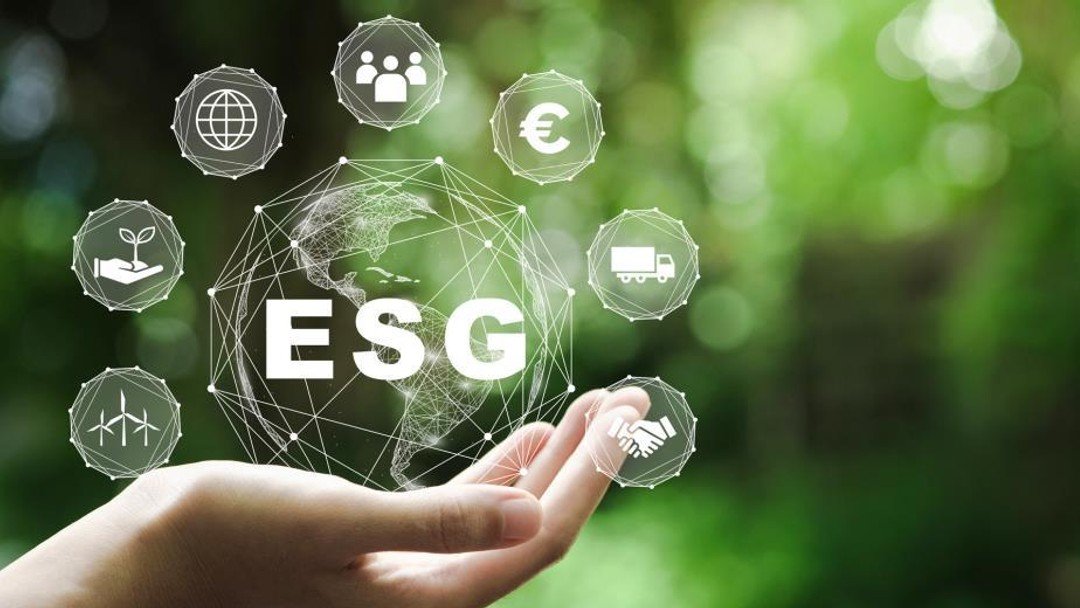Discovering a more sustainable way to do business

By Neil Lloyd
Neil Lloyd explores the ESG standards and the challenges and opportunities it brings for forms
ESG – or Environmental, Social and Governance – is more than just another buzz phrase that will be here today, gone tomorrow. It’s the way all businesses are being encouraged to operate and law firms are no exception.
ESG is more important now than ever before. We are rapidly moving towards a future where all businesses and organisations are being held accountable for the impact they have on the environment, on their staff and customers and on the communities they work within.
We are seeing ESG questions increasingly included on tenders for local authorities, social housing trusts and other organisations who want to know what your policies are and what you are doing in practice to get to Net Zero, for example. As well as being important for securing business from those clients, there are also benefits for staff engagement, community relations and also maintaining your corporate reputation.
So what’s stopping more law firms from embracing ESG policies and activities? The G (governance) is the easiest to achieve. Many firms are already operating in a strictly regulated industry, so many of the basic elements are covered by standard operating practice and will already be doing the S (social) too as part of their CSR work.
It’s really the E (environment) that is the main barrier. There are likely lots of quick wins that can be implemented to improve your environmental impact and once you have laid your foundations it builds your confidence to do more.
Environmental
When I took over as Managing Director in April 2020, I came into the role with a five-year plan. One of my ideas was to reduce staff travel and embrace video conferencing to reduce our carbon footprint and improve productivity. Of course, Covid moved my ambitions forward very quickly, but we as a business are still committed to reducing mileage post-pandemic. We’ve recently upgraded our video conference software to ensure this medium still works for us and we don’t drift back into old ways of working.
When travel is necessary, we are making it easier for staff to do it more sustainably. We encourage car sharing to work, we have a partnership with Lex Autolease to offer employees a more affordable way to lease an electric vehicle, and we offer the Cycle 2 Work Scheme.
In addition to mileage and travel-related emissions, our biggest environmental challenge is power usage. We started measuring our energy use pre-pandemic so we have a good idea of what our baseline is and where we can make improvements.
Unfortunately, several of our offices are in listed buildings, which makes implementing energy saving measures more difficult. We’ve done some of the quick wins already; replacing inefficient lighting for LEDs and sensor lights, and replacing boilers for more efficient ones. We’d love to fit solar to bring down our energy use further, but PV panels are not in keeping with the traditional character of a listed building!
That said, we’ve recently been able to get planning permission to change metal windows for UPVC in one of our offices. Getting planners on board with your sustainability goals is essential to get these initiatives through.
Within the office, we’ve implemented lots of initiatives to reduce waste. We’ve replaced our waste bins with recycling bins to encourage employees to recycle their waste, and removed the plastic cups at the water fountain, offering glasses from the kitchen instead.
Even our business cards are sustainable. We use Vice digital business cards which allow an employee’s contact details to be shared quickly and securely to a customer’s smart phone with one tap! This saves money and resources on the boxes of business cards we used to have printed.
Paper use is also low hanging fruit. We now use BundleDocs to share documents to save on paper and printing, and data rooms to share documents and track versions internally. Any necessary printing has to be double sided and black and white. This has brought down our paper use considerably!
Social
We already had CSR activities in place, so our ESG efforts have been focused on how we develop this further. In the past, we’ve had a three-year charity strategy dedicated to raising money for a small number of charities. We’ve now switched this to a pot of money which staff can request funds from for the local charities and good causes that mean the most to them.
It has engaged staff more with our social activities as they can see the benefit. We’ve found we are sharing the same amount of money but are giving smaller amounts to a greater range of good causes.
We’ve also made it easier for employees to get involved in fundraising through the trundl app which converts steps into pounds for good causes. Employees simply track their walks on the app and it is converted into money for one of the chosen charities. The team really love this one!
Governance
Most law firms already do this as standard practice. However, what we’ve learned through the ESG process is that we can – and should – push to do more.
For example, the Cyber Essentials accreditation only requires a self audit. But you can upgrade to the Cyber Essentials Plus, which is externally audited, to add more weight to that certification. We are also eyeing up the ISO 270001 accreditation as the next step in our ISO journey to go above and beyond what is comfortable or expected.
The challenges
It hasn’t been easy to devise and deliver our new ESG standards. One of the most challenging aspects has been that we don’t have a dedicated inhouse resource for it. The only existing resource we had in place was our 10-strong CSR team, who have now expanded their fundraising-orientated activities to embrace a wider social brief.
In place of a dedicated person or team, I lead the way and set the direction of travel and staff are empowered to do whatever they can do to contribute and make ESG-positive decisions. Everything we do now is looked at through an ESG lens and we have an internal ESG policy that all employees are aware of.
The other main challenge is the cost. Our paper now costs more, but it’s from sustainable or recycled sources. Our energy tariff is higher, but it comes from offshore wind generation only. Doing the right thing is not always the most cost effective choice, and that’s something you have to be comfortable with.
What next?
Like any policy, it’s not enough to introduce it and let it gather dust. When you are changing behaviours, the policies need to front and centre at all times as new ways of operating become the norm. So while you might need to remind people to turn off lights in rooms they aren’t in in the short term, it will embed lasting behavioural change which benefits the business, the planet, your customers and your community.
